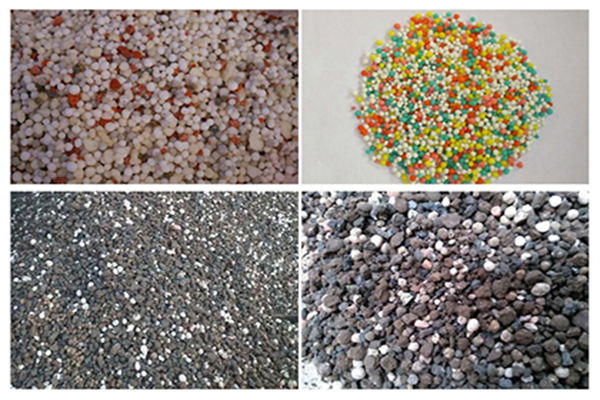Bulk blending fertilizer production is a method of manufacturing fertilizers by mixing different nutrient components in their dry form to create a customized blend that meets the specific nutrient requirements of different crops and soils. This approach allows for flexibility in tailoring fertilizers to address the unique nutrient needs of various agricultural situations.
Here’s an overview of the bulk blending fertilizer production process:
Ingredient Selection
Different nutrient sources, such as nitrogen, phosphorus, potassium, and micronutrients, are selected based on the nutrient requirements of the target crops and the characteristics of the soil. And it is advisable to choose uniform size chemical material pellets.
Batching
Batching various fertilizer materials granules strictly according to required proportion. This step is important for achieving a quality blending fertilizer making.
Blending Equipment
Specialized equipment is used for blending the different nutrient sources. Blenders or mixers are designed to handle dry granular materials and ensure thorough mixing to achieve a consistent blend. Click here to learn more.
Quality Control
During and after blending, samples are taken and analyzed to verify that the desired nutrient composition has been achieved. Quality control measures help ensure that the final product meets the intended specifications.
Packaging
Once the desired blend is achieved and quality checks are conducted, the bulk blended fertilizer is packaged into bags or other suitable containers for distribution and sale. This is the final process of BB fertilizer production.
Benefits of Bulk Blending Fertilizer Production:
Customization
You can make NPK belnding fertilizer tailored to the local farming nutrient requirements of their crops and soil types, optimizing plant growth and yield.
Flexibility
Nutrient ratios can be adjusted based on changing soil conditions and crop needs, providing more control over fertilization strategies.
Cost-Effectiveness
Bulk blending allows for efficient use of available nutrient sources, potentially reducing costs compared to pre-mixed fertilizers.
Reduced Environmental Impact
By applying nutrients precisely as needed, the risk of over-fertilization and nutrient runoff can be minimized, contributing to better environmental stewardship.
It’s worth noting that bulk blending fertilizer production requires careful consideration of nutrient compatibility, accurate measurement, and quality control to ensure consistent and effective blends. You can visit https://www.fertilizerbusinessplan.com/fertilizer-blending-plant/ for reference.

